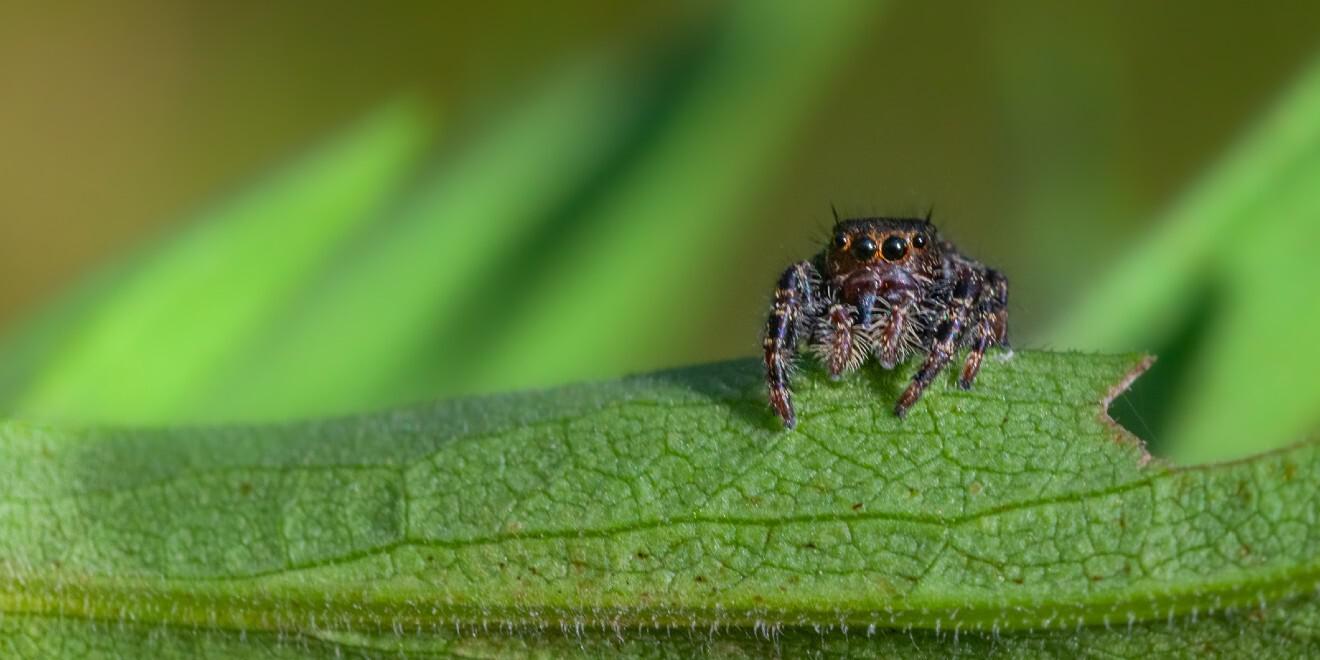Common Types of Arachnids (Arachnids Aren’t Just Spiders)
Posted by Mosquito Squad
October 29, 2025

Author: Emma Grace Crumbley, Entomologist
When most people think of arachnids, they picture web spinners lurking in dark corners or eight-legged creatures scurrying out of sight. But the arachnid world is far more diverse than just spiders. While it’s true that over half of the members of Arachnida, the scientific class for eight-legged arthropods, are spiders, there are several other arthropods that often get overlooked. And they might even be in your backyard!
What is an Arachnid?
Arachnids are a special group of arthropods in the scientific class Arachnida. To qualify as an arachnid, animals have to first be arthropods with jointed appendages, segmented bodies, and exoskeletons (so no, eight-legged octopi are not included!). To be a member of Arachnida, arthropods also have to have:
- Eight legs
- No wings or antennae
- Two body segments with a fused head and thorax (called a cephalothorax)
- Specialized mouthparts and appendages (called chelicerae and pedipalps)
As of October 2025, there are over 100,000 unique species classified as arachnids, and over 50,000 of them are specifically spiders. That means the other half of Arachnida is made up of non-spider arachnids.
Scorpions
Scorpions belong to the order Scorpiones, and there are around 1,500 species worldwide. You’ll recognize a scorpion by its curved, pointed tail, but if you look closely, you’ll also notice it shares the arachnid characteristics: eight legs, no wings, no antennae, and a fused head-thorax. It may seem scorpions have too many legs since their pincers are prominent and at the front of the body. However, these pincer-like appendages are actually modified mouthparts (pedipalps), not legs at all! Most scorpions are nocturnal predators, often hiding during the day and ambushing prey at night.
Fun Fact: Scorpions will fluoresce under black lights. If you think you have scorpions in your yard or want to go on a scorpion scavenger hunt, take a black light at night and look for scorpions that shine back at you.
Daddy Longlegs
Most people don’t realize that while daddy longlegs are arachnids, they are not spiders. Daddy longlegs, also known as harvestman, belong to the order Opiliones. Though they often spread their legs in the same way spiders do, these arachnids cannot produce silk to spin webs, nor do they have venom glands. Instead, daddy longlegs feed by scavenging or opportunistically eating small invertebrates and organic debris.
Fun Fact: When fleeing from a predator, harvestmen will sometimes intentionally detach a leg in their escape. Their detached leg may continue to twitch and move for minutes up to an hour after being amputated, and many scientists believe this is to distract predators from pursuing the fleeing arachnids. They really are putting those long legs to good use!
Ticks and Mites
Don’t let these tiny critters fool you. Not only are ticks and mites arachnids, but their subclass Acari makes up about 48,000 of the 50,000 or so remaining non-spider arachnid species. Ticks (Ixodida) are often blood-feeding parasites of mammals, birds, and reptiles, and are well known for their role in transmitting disease. Mites are divided into two major suborders: Acariformes (spider, dust, and scabies mites) and Parasitiformes (predatory mites like Varroa mites).
Not-so-Fun Fact: Ticks and mites are both pests that affect human, animal, and plant health. Ticks remain the leading vectors of arthropod-borne disease in the US, contributing to the spread of Lyme disease, Rocky Mountain Spotted Fever, and Anaplasmosis. Mites are a common nuisance among home gardeners and the agricultural industry, with annual damage estimated in the billions of dollars.
Got Arachnids?
Not for long! Mosquito Squad Plus now controls more than mosquitoes and ticks. To learn about our pest treatments, call your local Squad for a free quote. Services vary by location.
